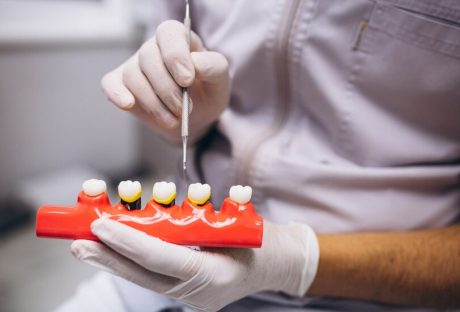Comfort and quality are very important when it comes to bedding, particularly for people who have sensitive skin. Egyptian cotton sheets are among the finest available on the market. These particular sheets have been people’s choice because they are luxurious, durable, and skin-friendly.
In this article, we will discuss reasons these cotton sheets give special advantages to sensitive-skin people.
What Is Egyptian Cotton?
You guessed it right—Egyptian cotton is cotton grown in Egypt. The Nile River’s delta offers the most perfect cotton growing conditions.
Egypt’s nutrient-rich soil and climatic conditions produce the highest-quality cotton. This helps produce the much-valued, long-stapled, and strong fibers. It denotes that weavers can make more durable and luxurious textiles of the highest quality in the world.
In addition, the long stapled cotton has an unmatched feel of ultimate luxury. Hence, all these attributes make the sheets the most premium, longer-lasting fabric.
Alongside durability, these cotton sheets have a reputation for their beautiful luster and absorbent capabilities. This is how you get these luxury bedding sheets.
Egyptian cotton sheets are a hallmark of quality, and they easily distinguish themselves from common mediocrity. This is why experts rate them high on the list of high-quality cotton.
The Advantages Of Egyptian Cotton Sheets
The Egyptian cotton sheets have a reputation of being of the highest quality. This is why they are the preferred choice for people seeking the ultimate luxury.
You can call it a gold standard for quality. The cotton sheets are the perfect blend of quality, comfort, and luxury. However, we discuss some of the key reasons why Egyptian cotton is ideal for sensitive skin:
Superior Softness
When you think of exceptionally soft fabric, one name comes to mind: Egyptian cotton! This is wholly attributed to the fact that this material comprises long staple fibers. This makes up its composition, unlike other types of cotton, whose fibers are shorter and coarser.
Hence, they are less prone to being woven into thin threads.
That means we now have fabrics that are smoother upon touch than all others. That is the reason you get more comfort during sleep.
Besides, its softness also creates an environment conducive to relaxation at bedtime for those with skin sensitivity.
Hypoallergenic Properties
People with sensitive skin are most concerned about allergic reactions. These may occur due to various causes, including anything touching or rubbing against their body parts.
Furthermore, this fabric is so tightly woven that it excludes dust mites and some other typical allergens like molds.
Thus, all these factors help reduce the chances of getting an allergy. Hence, Egyptian cotton enhances sleep quality by ensuring a person breathes in cleaner air at night. Therefore, while sleeping on hypoallergenic Egyptian cotton sheets, those with sensitive skin do not need to bother. These sheets of linen guard them against any kind of discomfort or allergic reactions that might arise during the night
Higher Thread Count
One of the key indicators of high quality is the thread count. It is the number of threads that are woven to create one single square inch of sheet.
You have the thread count by counting the width-wise threads called weft and the lengthwise thread counts or the warp.
The higher thread count is one of the key indicators of higher-quality sheets. The Egyptian Cotton Sheets are known all around for their higher thread counts compared to the other thread counts. This happens as a result of the staples’ length.
You can get a diverse range of thread counts in the Mediterranean climate. It includes a super soft 200 thread count, a sumptuous 400 thread count, and also the 5-star quality 600 thread count Egyptian cotton bed linen.
Breathability And Moisture-Wicking
Egyptian cotton sheets are highly breathable because they are made from natural fibers. Their composition allows free air circulation within them, thus regulating the human body’s warmth while asleep.
Moreover, this characteristic is essential for people who have fragile surfaces. Excessively high temperatures and sweating make their skin more harmful than before.
Egyptian cotton has excellent moisture-wicking abilities. It enables the sheet to soak, dry sweat faster, and keep skin dry throughout the process. However, proper moisture regulation makes Egyptian cotton bedding the right choice for a cool sleeping atmosphere.
Anti-Pilling Properties
Pilling is the formation of small balls of fiber on fabric due to friction. It can be especially disturbing for those with sensitive skin because it creates a rough and uneven texture.
Moreover, Egyptian cotton that has long staples does not pill excessively, hence maintaining a consistently soft and smooth surface.
This implies that even with frequent use, the development of comfortable and non-irritating bed sheets will take longer. Resistance to pilling helps maintain the luxuriousness of the sheets by ensuring a constantly soft touch, which is very important when dealing with delicate skin.
Durability And Longevity
For comfort and long-term value, top-quality bedding should be considered a must-have as durability and long-lastingness are the two characteristics that make Egyptian cotton sheets trendy.
Forgetting their softness or integrity, the fibers of Egyptian cotton are strong enough to endure many washes and maintain their original touch even after being used over time.
This means that people with sensitive skin can enjoy gentle sleep for many years into the future by simply keeping their bedsheets intact.
Smooth And Lustrous Finish
The fabric’s smoothness is particularly useful for people suffering from delicate skin since it minimizes friction while providing relief by touching a soothing material across it.
The sumptuous feel of Egyptian cotton beddings enhances the overall sleep experience, making you look forward to sleeping on them every night.
Such enhancement ensures that your surfaces remain delightful regardless of whether you have sensitive skin to worry about or not.
No Piling
Cotton usually tends to piling. This means the piling of cotton fiber creates little pills, which can be uncomfortable for users.
You will often find them in sheets of lower quality or lower thread count. But with Egyptian Cotton Sheets, you won’t find them.
The Fibres from Egyptian cotton plants are longer. Moreover, they produce lints, which stops the development of piling on the sheets.
Cost Effectiveness
As we discussed, Egyptian cotton sheets are of the highest quality, and it is natural that they may look expensive initially. However, there is no denying that these cotton sheets are an investment.
You can not mingle them with cheap sheets. With adequate impetus on the care and maintenance of the cotton sheets, you can extend their longevity.
They last much longer than ordinary cotton sheets. Not that the cotton sheet lasts long, but it turns out to be cost-effective in the longer span of a lifetime.
The Mediterranean linens offer quite a choice of styles, colors, and textures. You can get a range of products, which include Egyptian cotton fitted and flat sheets, Egyptian cotton duvet covers, and also the Cotton Oxford Pillowcases. The vast choices make these sheets unique in their own realm.
Conclusion
Egyptian cotton sheets have various advantages, which make them perfect for persons with delicate skin.
For people with sensitive skin and those who want to select environment-friendly products, choosing these cotton sheets means supporting sustainable farming methods and avoiding harmful chemicals found in other types.
This can be achieved by getting your Egyptian cotton sheets at Pure Parima store because their sleeping materials do not harm or cause irritation to delicate skin.
Read Also:






















